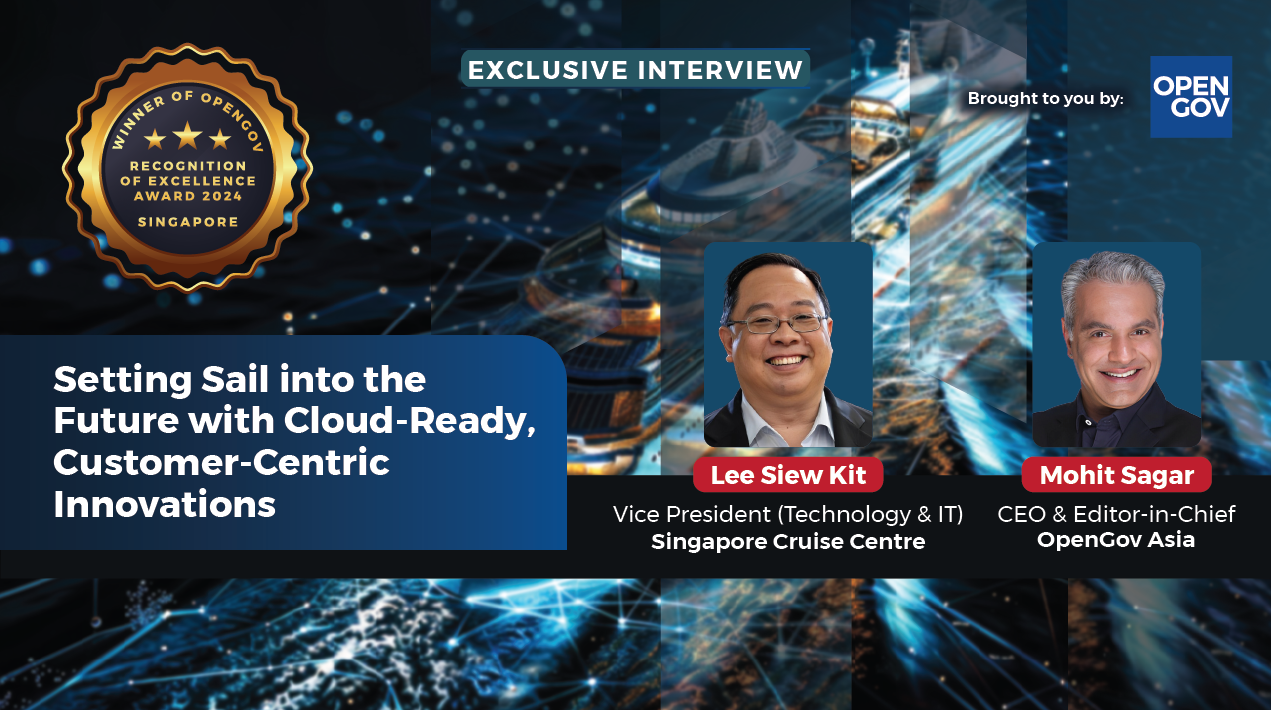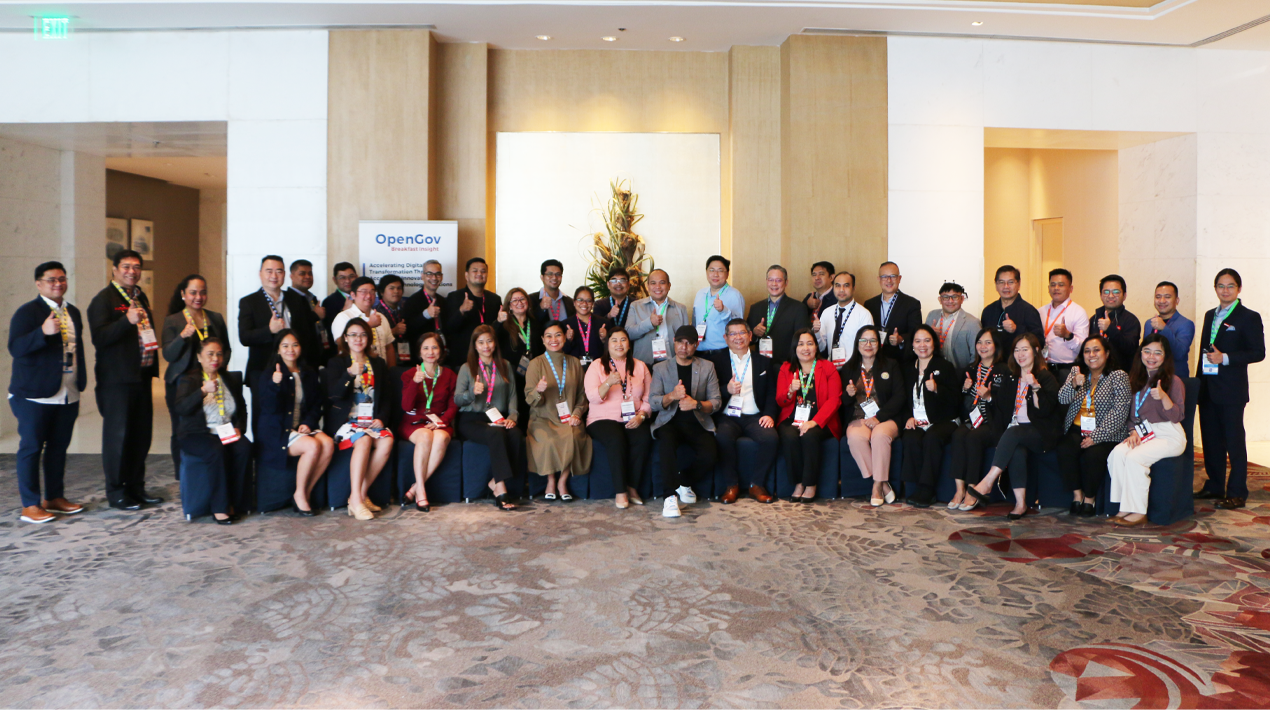
|
Getting your Trinity Audio player ready...
|
In the past few years, there has been a remarkable surge in the Philippines’ endeavours to kickstart digital transformation across different industries. These efforts have proven successful in revolutionising business operations, enhancing user experiences, and fostering heightened competition within the market.
Enhancing user experience holds paramount importance, particularly in the realm of public services. Establishments must display a steadfast dedication to enhancing public services by embracing technology that is both accessible and user-friendly. This represents a pivotal stride towards delivering services to the public that are not only more efficient but also exceedingly convenient.
Through the adoption of cloud-based infrastructure, public service entities can integrate applications and platforms equipped with adaptable and dependable resources. This empowers them to provide prompt and uninterrupted services, thereby enhancing their ability to cater to the requirements of the community effectively.
The pivotal factor in elevating productivity and ensuring streamlined access to crucial services lies in a user-friendly interface. Such an interface not only simplifies the comprehension of software applications but also optimises time utilisation for users, fostering a more efficient and convenient experience.
Moreover, the presence of a user-friendly interface cultivates an environment of innovation and adaptability within organisations. As users become at ease and self-assured in their technology interactions, internal teams are inspired to engage in creative thinking and explore novel avenues for enhancing services and operational procedures. This dynamic encourages the emergence of improved and more streamlined approaches to tackle the continually evolving challenges of the digital business landscape.
Establishing a system of this nature necessitates careful attention to pivotal components, including corporate data, privacy measures, supply chain dynamics, and the realm of cloud computing. These multifaceted factors collectively introduce intricate security vulnerabilities, underscoring the need for a proactive stance to avert the occurrence of cyber threats.
Transitioning to cloud-based data modernisation represents a strategic move towards safeguarding the confidentiality of organisational data. Through the adoption of an agile resource approach and effective partnership with cloud service providers, entities can adeptly guarantee the adaptable and highly secure operation of the majority of their workloads.
Similarly, AI solutions exert significant influence over operational transformations, particularly within direct decision-making processes. Through the allocation of resources towards AI-driven decision intelligence, entities position themselves to make swift and well-suited choices on a substantial scale, consequently enhancing the overall calibre of their services.
Furthermore, organisations committed to delivering a unified and all-encompassing experience prioritise not only customer satisfaction but also employee and user contentment. By amalgamating previously distinct disciplines into a cohesive, user-centric ecosystem and redefining the user journey, they can wholeheartedly embrace a comprehensive and intricately detailed approach to solutions.
The OpenGov Breakfast Insight held on 14 September 2023 at the Shangri-La The Fort Manila discussed advanced technology and its benefits in digital transformation efforts to increase resources and collaborate more effectively to prioritise customer satisfaction in the Philippines’ government, education, healthcare, and financial services sectors.
Opening Remarks

Mohit Sagar, the CEO and Editor-in-Chief of OpenGov Asia, recognises that digital transformation has transcended its status as a mere trend. It has evolved into an indispensable requisite for businesses striving to thrive within today’s swiftly moving, technology-centric landscape.
Enterprises are swiftly embracing digital transformation – a comprehensive undertaking involving the infusion of digital technology into every aspect of their functioning to ensure competitiveness and significance.
The emergence of the pandemic accentuated the urgency of digital transformation. Digital collaboration tools, telemedicine, online shopping, and remote work transitioned from mere conveniences to essential pathways for survival.
Businesses that had already allocated resources to digital technologies discovered themselves in a more advantageous position to react, given the disruptions caused by lockdowns and social distancing measures to be established business frameworks.
Mohit reiterates that digital transformation has transitioned from an option to an obligatory imperative within this evolving terrain. It encompasses far more than mere procedural refinements or the development of an appealing website; it mandates a purposeful reconfiguration that permeates an organisation’s culture, procedures, and engagements with clients.
For an organisation to effectively embrace and leverage novel technologies, it needs more than just a handful of technologically adept staff members. The benefits of digital transformation should extend to all, spanning from top-level executives to frontline staff and clientele.
A cornerstone to achieving a thriving digital transformation is ensuring accessibility across all levels of an organisation’s structure and operations. In this context, accessibility encompasses the democratisation of technological knowledge and tools, making them readily available and comprehensible to a diverse range of individuals within the organisation. This not only involves catering to tech-savvy personnel but also bridging the knowledge gap for those who might be less familiar with intricate digital systems.
He stressed the paramount importance of organisations allocating financial resources towards comprehensive training and educational initiatives aimed at elevating the skill set of their workforce, a pivotal factor for the realisation of digital transformation endeavours. Employees must cultivate a level of digital literacy that enables them to proficiently navigate and leverage novel tools and systems.
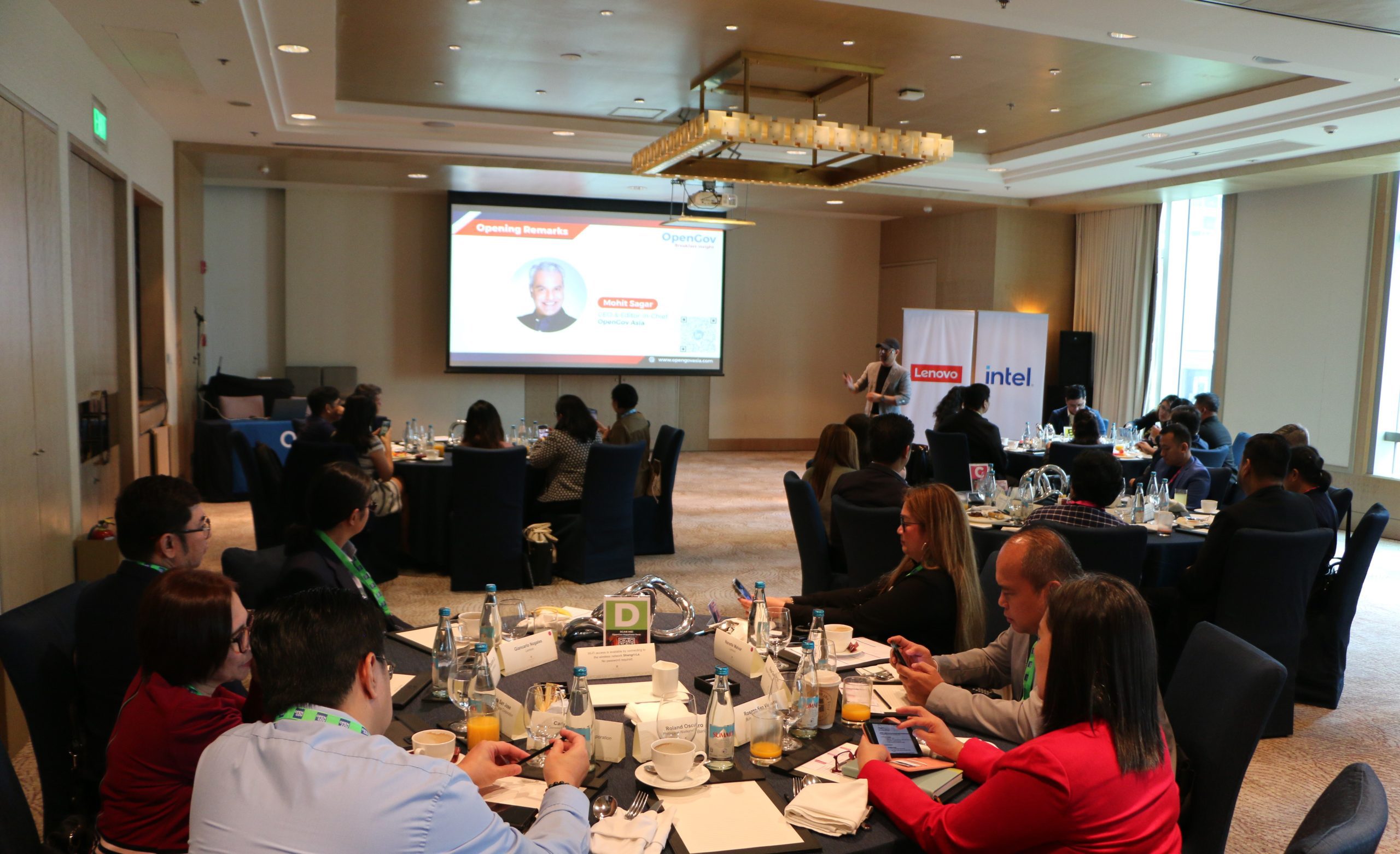 “User-friendly interfaces are a requirement for technology solutions since they lessen the learning curve for both clients and staff,” Mohit explains. “The usage of intuitive designs improves customer satisfaction and adoption rates.”
“User-friendly interfaces are a requirement for technology solutions since they lessen the learning curve for both clients and staff,” Mohit explains. “The usage of intuitive designs improves customer satisfaction and adoption rates.”
Both usability and inclusivity fall under the umbrella of accessibility. It’s crucial for organisations to take into account the requirements of individuals with disabilities and ensure that digital solutions align with accessibility standards, thereby enabling universal usability, Mohit clarifies.
Cost considerations are intricately tied to the notion of accessibility. Recognising that not all enterprises can readily invest in cutting-edge technology, the preservation of scalability and cost-effectiveness remains pivotal in fostering extensive adoption.
Additionally, the bedrock of a thriving digital transformation is rooted in innovation. Consequently, organisations must continuously seek pioneering solutions, employing a variety of techniques, to effectively navigate the rapidly evolving digital terrain of today.
From Mohit’s perspective, instilling a culture of perpetual learning within the company is imperative. Sustaining flexibility and competitiveness hinges on fostering an environment that motivates employees to continuously update their knowledge of emerging technologies and market dynamics.
Furthermore, embracing experimentation often becomes a prerequisite for driving innovation. Establishing a secure space where team members can explore and experiment with new technologies and strategies is of paramount importance. Creating this safe haven eliminates concerns about potential failures, allowing for bold and inventive initiatives to be pursued without hindrance.
Access to new concepts and cutting-edge technologies is made possible by collaboration with startups, tech incubators, and other organisations. These collaborations can speed up the innovation process and yield insightful data, Mohit is convinced.
Innovation is distinguished by the utilisation of data analytics to steer decision-making, as data holds the power to unveil vital insights that aid businesses in identifying avenues for innovation and enhanced efficiency.
Similarly, the implementation of a robust cybersecurity strategy emerges as a critical necessity. This strategy commonly encompasses elements such as firewalls, encryption, regular system upgrades, and comprehensive employee training, all designed to effectively mitigate risks and safeguard organisational integrity.
Security breaches are an inevitable possibility. Hence, it is essential for businesses to establish and regularly update incident response plans. These measures are instrumental in mitigating the impact of security lapses and facilitating a swift and effective reaction when breaches do take place.
Mohit acknowledges that a key facet of security is the strict observance of data privacy regulations. In an era characterised by prevalent data breaches, prioritising the confidentiality of client data not only establishes trust but also fosters confidence. As an increasing volume of data migrates to cloud platforms, the safeguarding of cloud configurations becomes imperative.
To this end, the implementation of access controls, comprehensive data encryption, and meticulous security protocols emerge as a requisite. These measures collectively work to fortify the protective framework, ensuring the resilience of cloud-based systems against potential vulnerabilities and unauthorised access.
“The digital transformation process rests upon three primary pillars: accessibility, innovation, and security,” Mohit concludes. “In the swiftly evolving digital landscape of today, organisations that accord these factors precedence in their endeavours to effect digital change are better equipped to adeptly navigate the challenges and opportunities presented by the dynamic digital ecosystem.”
Welcome Address

Highlighting the significance of user experience, Raymond Remoquillo, Head, Enterprise and REL Business, Lenovo, underscores the imperative for organisations to prioritise an enhanced interface, thereby recognising that fostering positive relationships with customers and product or service users hinges on a robust understanding of user experience.
“A good interface not only provides user convenience, but also creates a positive impression, increases customer satisfaction, and enables the organisation to better meet user expectations,” Raymond says.
Amid intensifying business rivalry in today’s landscape, organisations capable of delivering an exceptional user experience stand to gain a substantial competitive edge, underscoring the vital strategic move of prioritising user experience through a robust interface as a crucial driver for the enduring success of the organisation.
Raymond explains that at Lenovo, a company dedicated to crafting software experiences for their PCs, they tailor their approach to cater to the diverse preferences of users. This is achieved by harnessing data research and engaging with customers to gather feedback, which is then transformed into valuable insights to enhance product design and development.
This strategy is integral to Lenovo’s commitment to ensuring that its products authentically align with users’ requirements and anticipations, resulting in a superb experience throughout every interaction with Lenovo devices.
In addition, Lenovo employs an array of methodologies to engineer efficient software experiences, encompassing ethnographic research, concept trials, online monitoring, and customer surveys. Nevertheless, the value of direct, in-person feedback from users remains unparalleled as it enables a profound comprehension of their perspectives on a product or service.
A continuous drive for improvement characterises Lenovo’s approach to software experience. Beginning from the initial stages of product conception and extending through development and post-purchase customer feedback, the Lenovo team collaborates closely with product managers, designers, and engineers to ensure that every facet, spanning from features to components, genuinely enriches the user’s software experience.
“Seeing people use our products for the first time can be very eye-opening for our team,” Raymond reveals. “Sometimes, product trials like this can even come up with creative solutions to potential problems that users don’t even know they’re experiencing.”
During the initial phases of product ideation, Lenovo places paramount importance on gaining a profound comprehension of user needs and preferences. To attain this objective, Lenovo employs a diverse array of research methodologies, including user interviews, behavioural analysis, and tracking industry trends. This comprehensive understanding of user desires provides a robust foundation upon which products embark on their journey.
“Post-product availability, Lenovo maintains its dedication to gathering feedback from users,” Raymond concludes. “Our unwavering commitment lies in consistently enhancing the software experience for our users, ensuring our competitiveness within the industry, and augmenting user satisfaction.”
In Conversation With

Arlene Romasanta, the IT Director of the Knowledge and Information Systems Service (KISS) at the Department of Environment and Natural Resources (DENR), highlighted that digital transformation efforts have markedly improved user experiences across diverse sectors in the Philippines, reshaping how businesses and organisations engage with customers, provide services, and conduct operations.
Within the banking and finance industry, digital transformation has ushered in a host of innovations, exemplified by the widespread adoption of mobile banking applications that allow users to easily conduct transactions, review balances, and even apply for loans through their smartphones.
Digital wallets and payment gateways have streamlined financial transactions, enabling online payments that minimise the necessity for in-person visits to banks or payment centres, ultimately enhancing convenience. Moreover, these endeavours have played a pivotal role in advancing financial inclusion by reaching underserved regions, thereby broadening access to banking services and financial products for a more extensive demographic.
Digital transformation has brought about significant enhancements in user experiences within the healthcare sector, with the emergence of telemedicine services standing out as a notable example. These services enable patients to remotely consult with healthcare professionals, Arlene observes.
Educational institutions have embraced online learning platforms, providing students with the convenience of accessing lectures, materials, and assignments from their residences. This transition has not only introduced greater flexibility to learning but has also democratised education by reaching individuals across the nation.
Furthermore, the integration of digital libraries has widened the availability of research materials and academic resources, proving advantageous for students and researchers, particularly in remote regions of the Philippines.
Government agencies have embraced digital transformation through the introduction of online portals for diverse services, encompassing tasks such as tax payments and license renewals. This shift allows citizens to conveniently carry out these transactions online, effectively streamlining administrative procedures and diminishing the necessity for in-person visits.

Alex Tay, Solution Director Central Asia Pacific, Lenovo, notes that digital marketplaces and e-commerce platforms have revolutionised the online accessibility of a diverse array of products, often accompanied by user-friendly payment and delivery choices.
In parallel, digital transformation has enhanced the user-centric nature of transportation and logistics. Notably, ride-sharing applications have improved commuting convenience and safety within cities like Manila, empowering users to seamlessly book rides, monitor drivers’ progress, and make secure digital payments.
He additionally highlighted the prevalence of streaming services for movies, TV shows, and music, which have gained widespread popularity. These platforms empower users with the capability to enjoy content on their own terms, fostering a personalised and easily accessible entertainment experience.
Precision farming practices, facilitated by digital technologies such as sensors and IoT devices, have enabled farmers to optimise crop management. This has led to increased yields and profitability, improving the overall experience for those involved in agriculture.
Alex explains that at the heart of this imperative is the provision of advanced devices that empower employees with seamless remote work capabilities. This emphasis on accessibility takes on paramount importance due to several compelling reasons.
“Accessibility ensures universal access to technology, regardless of physical abilities or geographic location,” he elaborates. “Inclusivity is at the core of this approach, fostering a diverse and equitable workplace where every team member can contribute to their fullest potential.”
The remote work revolution amplifies the importance of accessible technology. As the global workforce undergoes a significant transition towards remote work, technology’s accessibility empowers employees to maintain efficiency from home or other remote settings.
Devices and technology solutions designed for accessibility incorporate user-friendly interfaces and features, minimising the learning curve and enhancing employees’ initial productivity. This absence of complex or unintuitive systems directly translates into heightened efficiency.
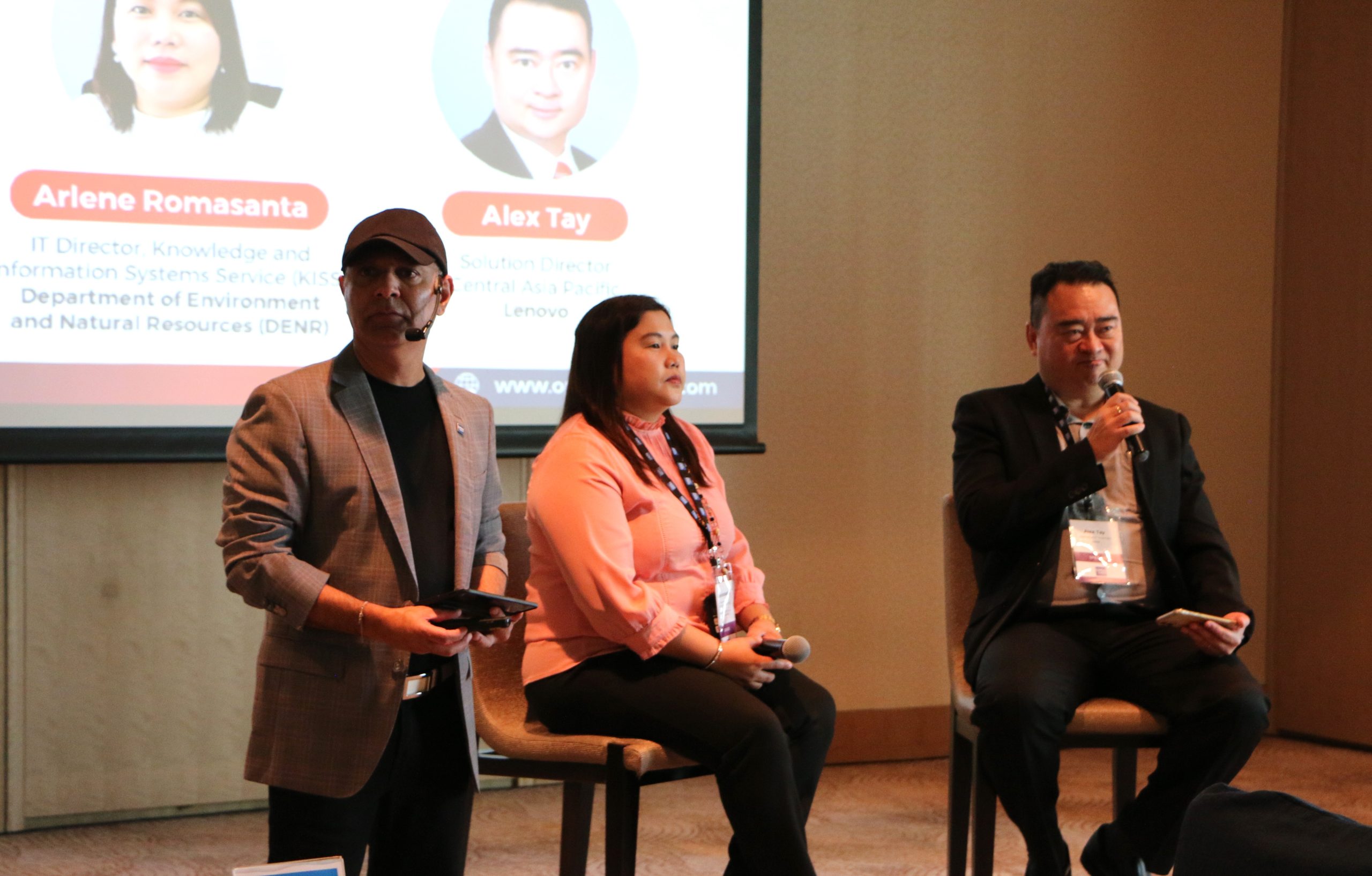 Arlene believes that technology accessibility is a pivotal aspect of disaster preparedness. The capacity to smoothly shift to remote work in times of crises, like natural disasters or public health emergencies, can determine whether business operations continue uninterrupted or face disruption.
Arlene believes that technology accessibility is a pivotal aspect of disaster preparedness. The capacity to smoothly shift to remote work in times of crises, like natural disasters or public health emergencies, can determine whether business operations continue uninterrupted or face disruption.
Furthermore, accessible technology contributes positively to employee well-being, an increasingly vital consideration for organisations. It not only supports employees in their work but also demonstrates care for their physical and mental health, contributing to a positive workplace culture.
Alex underscores the significance of user-friendly interfaces as the foundation of contemporary technology, essential for boosting efficiency, encouraging innovation, and enabling smooth interactions for users engaging with essential services. Their pivotal role in the current digital milieu cannot be overstated, as they form the bedrock for crafting a positive and efficient user experience.
“At the heart of this significance is the capacity of user-friendly interfaces to streamline complex processes and tasks, thus boosting efficiency. When users are presented with intuitive, easy-to-navigate interfaces, they can swiftly and effectively accomplish their objectives. This reduces the time and effort required to complete tasks, translating into tangible gains in productivity.
Arlene agrees that user-friendly interfaces play a crucial role in making critical services accessible to a wider audience. By removing unnecessary complexity and incorporating design elements that accommodate various user needs, including those with disabilities, these interfaces ensure that essential services are inclusive and available to all. This inclusivity aligns with the principles of digital accessibility and serves as a cornerstone for organisations committed to serving diverse user bases.
In the face of constantly evolving and complex security challenges, organisations must adopt a comprehensive and proactive approach to safeguard their assets and operations. Embracing a multi-layered security approach that integrates various security measures across different levels ensures that even if one security layer is breached, others can provide essential protection.
It is of paramount importance to establish continuous training programmes aimed at educating employees about cybersecurity best practices, cultivating a culture of heightened security awareness. This approach ensures that employees remain vigilant and comprehend their pivotal role in thwarting security breaches.
Alex advocates the practice of maintaining up-to-date software, operating systems, and applications with the latest security patches, in addition to implementing robust identity and access management protocols.
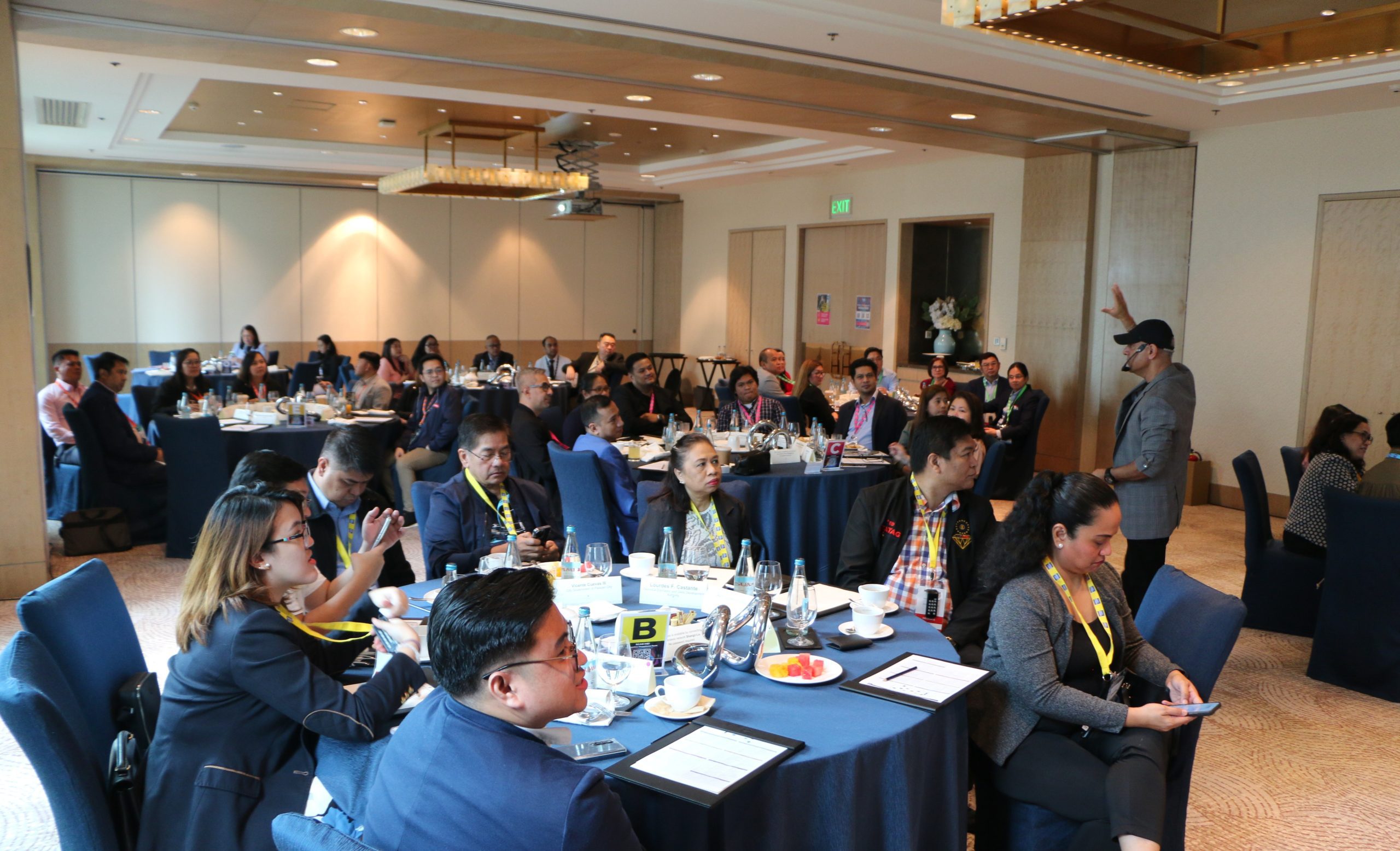 He also emphasised the importance of formulating a comprehensive incident response plan that delineates the necessary steps to undertake in the event of a security breach. This plan should encompass communication protocols, delineate roles and responsibilities, and outline strategies for mitigating damage and expediting recovery processes.
He also emphasised the importance of formulating a comprehensive incident response plan that delineates the necessary steps to undertake in the event of a security breach. This plan should encompass communication protocols, delineate roles and responsibilities, and outline strategies for mitigating damage and expediting recovery processes.
Closing Remarks
Raymond expressed his gratitude for the vibrant participation in the OpenGov Breakfast Insight, highlighting the multifaceted discussions from various entities and institutions that contribute to enriching fresh perspectives and knowledge regarding the acceleration of digital transformation for enhancing user and customer services.
He emphasised that ensuring user satisfaction during interface interactions stands as an imperative and inescapable facet. This focus arises from the understanding that a comfortable and intuitive user interface profoundly impacts the overall user experience.
The efficacy of interface design and its accessibility directly correlates with the potential to cultivate a positive user experience. Hence, prioritising the cultivation of a gratifying user experience becomes an essential mandate in the pursuit of delivering high-calibre technological solutions.
Raymond acknowledges the pivotal role of integrating users into the product development process, acknowledging their intrinsic value as a wellspring of insights for crafting impactful technological solutions.
As an SOP, OpenGov Asia frequently engages in direct communication with users, attentively considers their feedback, and organises product trial sessions. This proactive approach empowers his team to gain an enhanced comprehension of user requirements and preferences, thereby enabling them to engineer products that impeccably align with user expectations and necessities.
Mohit further underscored that technological advancement encompasses more than just the creation of technically sophisticated products; it encompasses the cultivation of a gratifying user experience. He firmly believes that robust technology should harmonise with an intuitive interface to deliver optimal value to users.
Incorporating user experience as a paramount consideration represents a strategic response to the multifaceted challenges and opportunities that typify the ongoing digital transformation era. Mohit agrees that aligning technology solutions with user-centric principles constitutes a proactive approach to navigating the complexities of this evolving landscape.
By directing attention towards the user’s needs, preferences, and expectations, technology can seamlessly metamorphose into a more impactful and valuable tool. This shift in perspective not only enhances the functionality of technological solutions but also augments the overarching quality of the customer experience.
This holistic approach serves as a bridge between technological innovation and end-user satisfaction, fostering a symbiotic relationship that propels both product excellence and customer contentment in the contemporary digital landscape.
“A product’s success isn’t just based on its features and how well it works, but also on how well it makes people feel and how much it helps them,” Mohit concludes.



